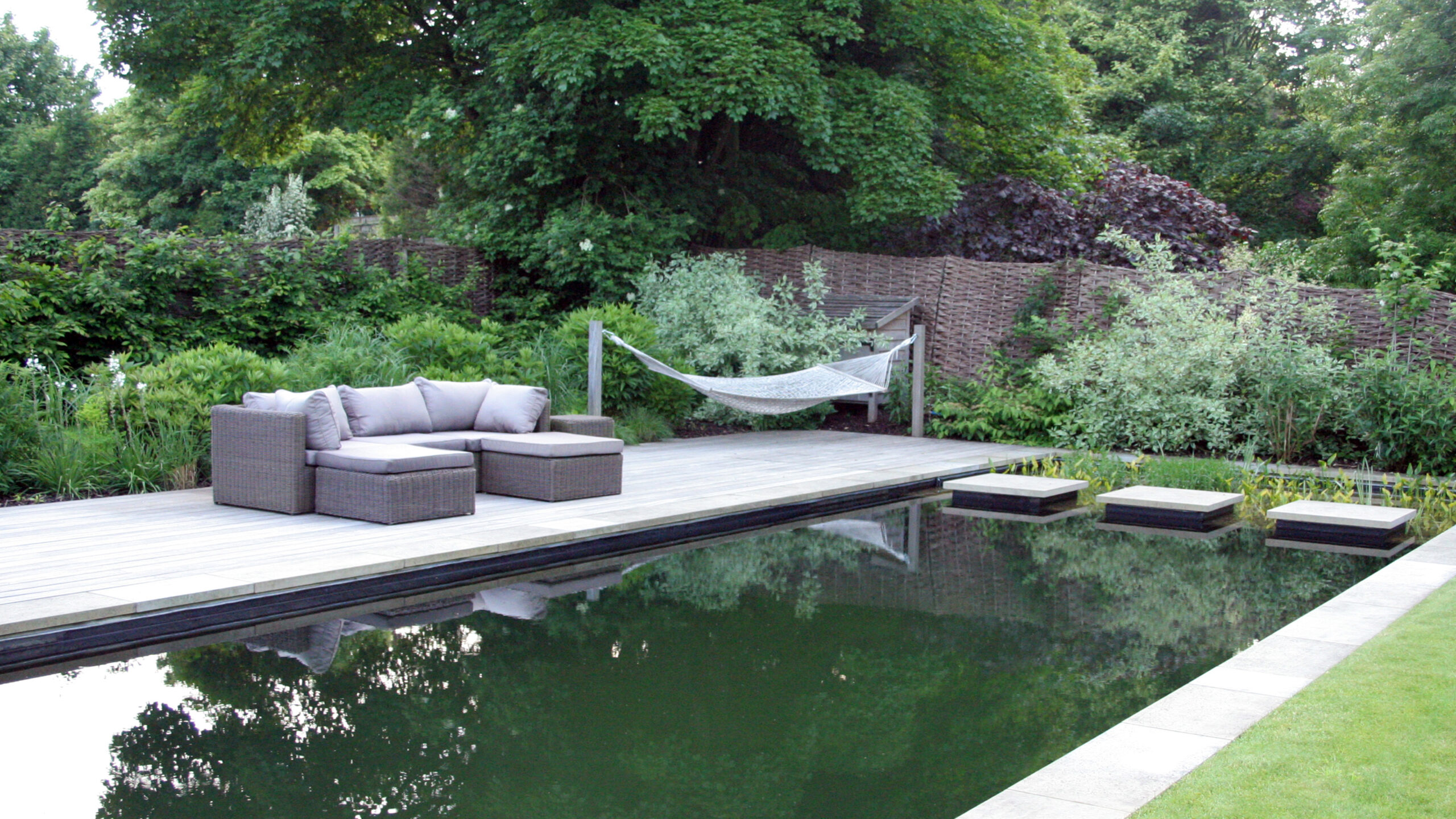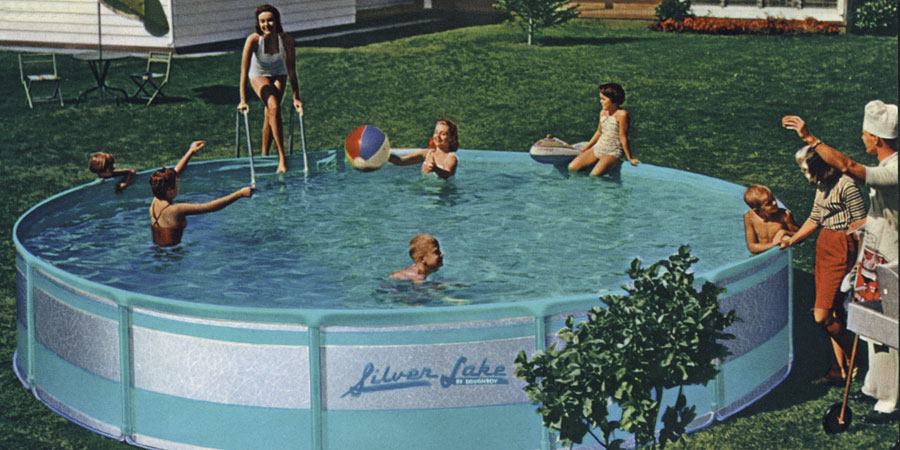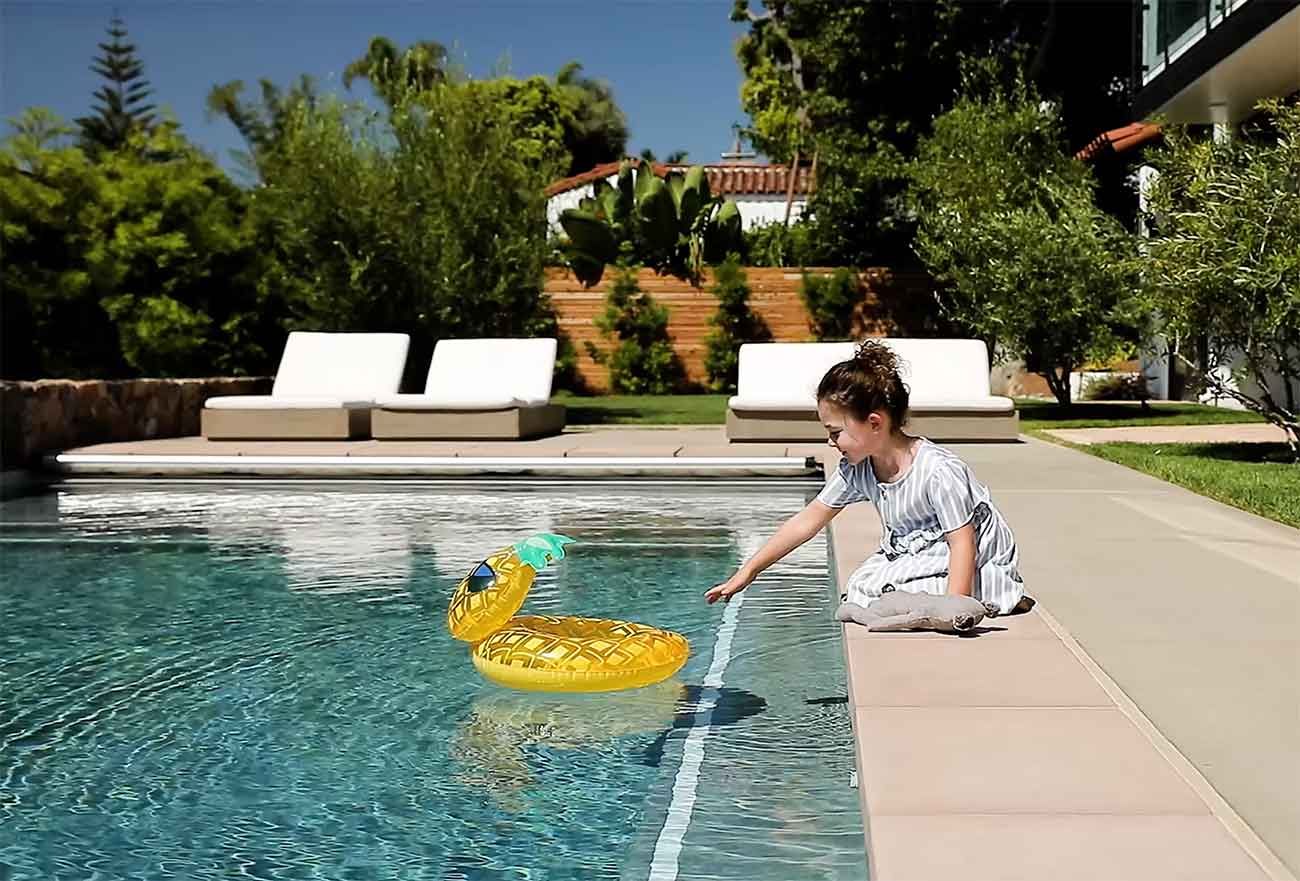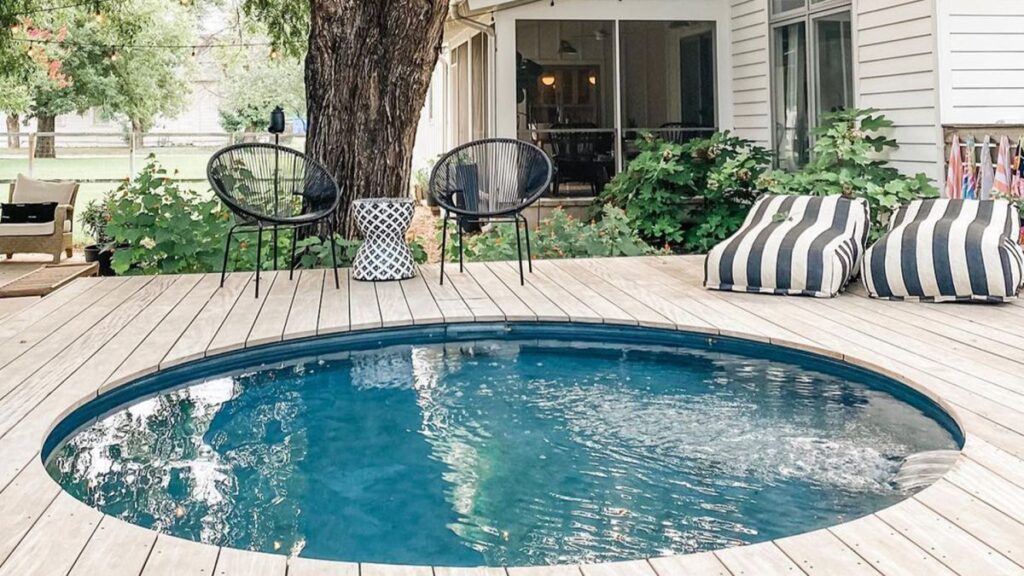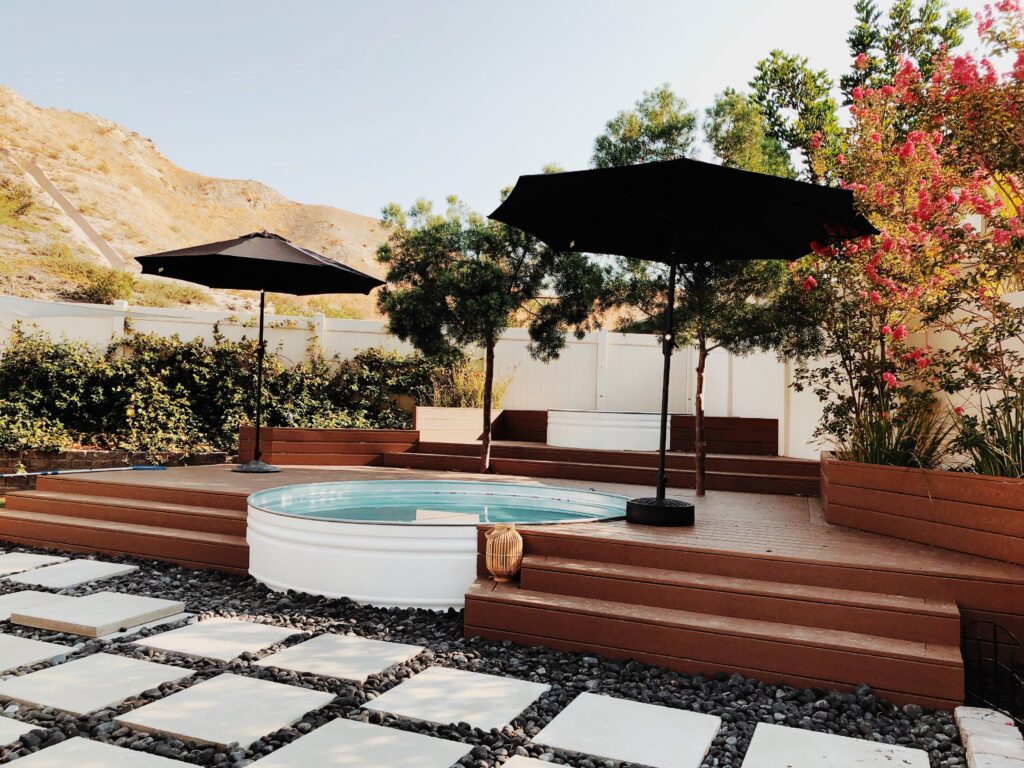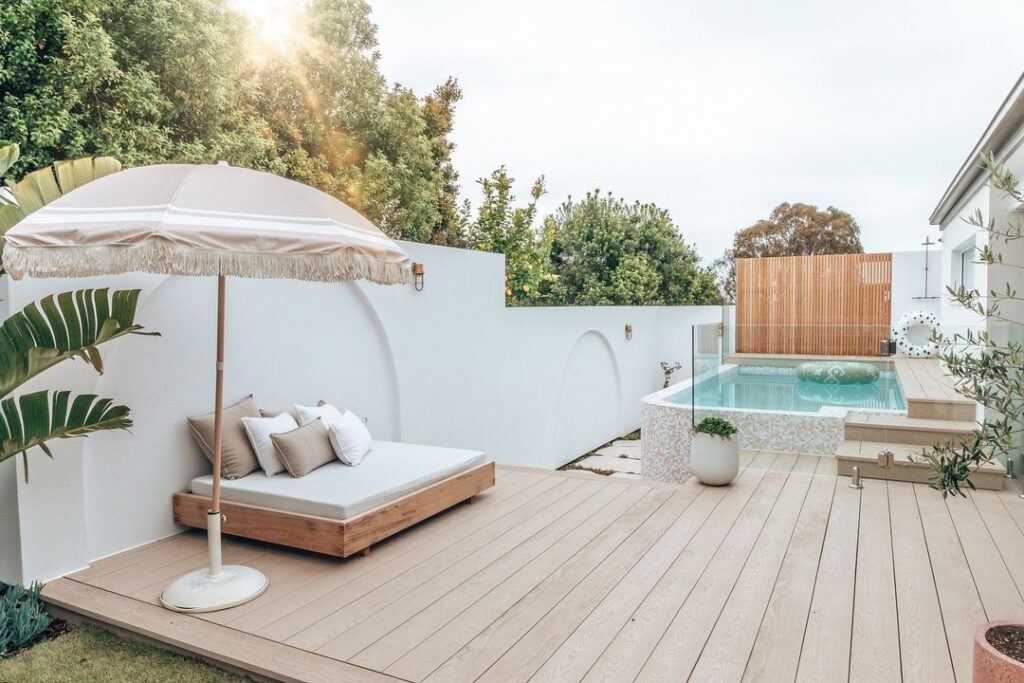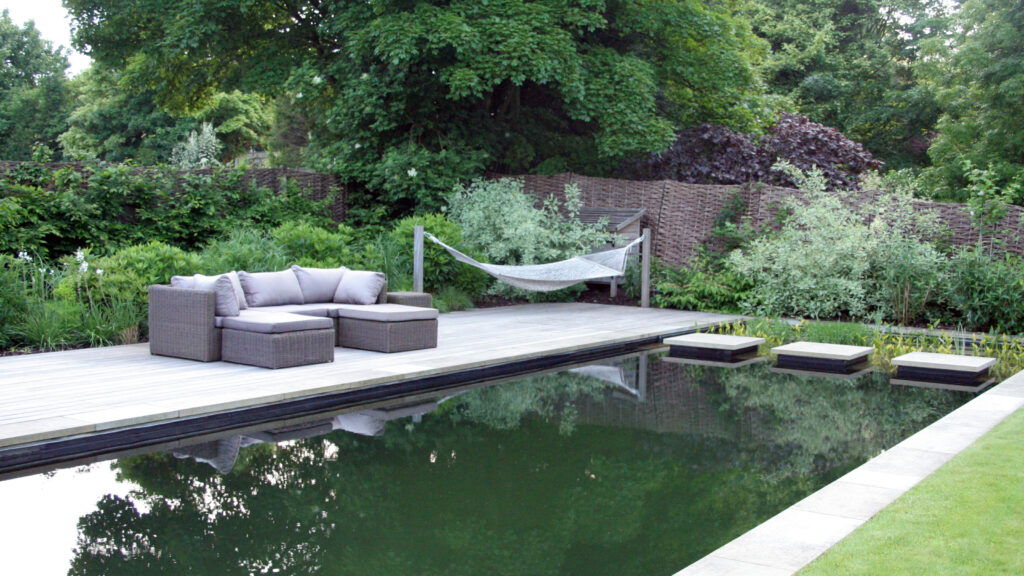Revamping Your Outdoor Space: Integrating an Above Ground Pool Deck Looking to transform your outdoor oasis into a stunning and inviting space? Look no further than integrating an above ground pool deck. This simple addition can instantly elevate the overall aesthetics and functionality of your backyard, creating a space that is perfect for both relaxation and entertainment. Whether you envision a cozy sunbathing area or a lively gathering spot for family and friends, an above ground pool deck is the key to unlocking the full potential of your outdoor space. Say goodbye to ordinary and hello to extraordinary with this game-changing addition.
Choosing the Right Decking Material
When it comes to choosing the right material for your above ground pool deck, there are a few factors you need to consider. The most common options for decking materials are wood and composite. Each choice has its own advantages and disadvantages, so it’s important to do your research before making a decision.
Considerations for Above Ground Pool Decks
Before delving into the different decking material options, it’s essential to consider a few factors that are specific to above ground pool decks. Firstly, above ground pool decks generally require more stability and durability than standard decks due to the weight of the pool itself. Secondly, safety is crucial, which means the decking material should be slip-resistant and able to withstand constant exposure to moisture. Lastly, you’ll want to choose a material that complements the aesthetic of your overall outdoor space and enhances its appeal.
Wood Decking Options
Wood is a classic and timeless option for decking, and it offers a natural and warm aesthetic to your pool deck. One popular choice for wood decking is pressure-treated lumber, which is known for its durability and resistance to rotting and insects. Another option is cedar, which offers natural resistance to decay and has a beautiful grain pattern. However, wood decking requires regular maintenance, including staining, sealing, and sanding, to keep it looking its best.
Composite Decking Options
If you’re looking for a low-maintenance decking option, composite decking may be the ideal choice for you. Made from a combination of wood fibers and recycled plastic, composite decking offers the look of real wood without the upkeep. It is resistant to moisture, fading, and staining, making it an excellent option for pool decks that require less maintenance. Additionally, composite decking is available in a wide range of colors and textures, allowing you to achieve the desired aesthetic for your outdoor space.
Maintenance Factors
When considering the maintenance requirements of your decking material, it’s important to think about your lifestyle and how much time and effort you’re willing to invest in upkeep. Wood decking, while beautiful, requires regular maintenance to keep it in good condition. This includes cleaning, sealing, and potentially replacing damaged boards. On the other hand, composite decking requires minimal maintenance, usually just a regular cleaning to remove dirt and debris.
Cost Considerations
The cost of your above ground pool deck will be influenced by various factors, including the size of the deck, the chosen material, and any additional features you decide to include. Wood decking is generally more affordable upfront, but the cost of maintenance over time should be taken into account. Composite decking, although pricier initially, has a longer lifespan and lower maintenance costs, making it a more cost-effective option in the long run. Consider your budget and long-term goals when making a decision on the decking material to ensure it aligns with your financial plans.
Designing Your Pool Deck
Once you’ve selected the right decking material, it’s time to move on to designing your pool deck. Designing the perfect pool deck involves considering the deck size and shape, incorporating safety measures, enhancing the aesthetics, integrating built-in features, and selecting furniture and accessories.
Determining the Deck Size and Shape
When determining the size and shape of your pool deck, it’s important to consider the available space, the functionality you desire, and any existing structures in your outdoor area. Take measurements of the area surrounding your pool and consider how much space you want for lounging, dining, or entertainment purposes. Additionally, think about the shape of the pool itself and how the deck can complement and enhance its overall design.
Incorporating Safety Measures
Safety should always be a top priority when designing your pool deck. Consider incorporating safety measures such as slip-resistant decking material, proper fencing or barriers to prevent accidents, and clear walkways and designated areas to minimize the risk of slips and falls. It’s also worth considering adding safety features like pool alarms and safety covers to provide additional layers of protection.
Enhancing the Aesthetics
Your pool deck is an extension of your outdoor living space, so it’s important to consider how it will enhance the overall aesthetics. Choose decking materials, colors, and textures that complement the style of your home and outdoor area. Additionally, consider incorporating elements such as plants, flowers, and decorative accents to create a cohesive and visually appealing space.
Integrating Built-in Features
To maximize the functionality and enjoyment of your pool deck, consider integrating built-in features. This can include things like built-in seating, storage benches, or even a poolside bar or kitchenette. Built-in features not only add convenience but also add a touch of luxury and sophistication to your pool deck.
Considering Furniture and Accessories
Choosing the right furniture and accessories for your pool deck is crucial in creating a comfortable and inviting outdoor space. Consider durable and weather-resistant furniture that can withstand exposure to sunlight and moisture. Opt for materials like aluminum or synthetic wicker that are specifically designed for outdoor use. Don’t forget to include accessories such as umbrellas, cushions, and outdoor rugs to add comfort and style to your pool deck.
This image is property of cdn.mos.cms.futurecdn.net.
Preparing the Ground
Before you can start building your pool deck, it’s essential to prepare the ground properly. This involves clearing the area, leveling the ground, and addressing any potential drainage issues.
Clearing the Area
Begin by clearing the area around your pool where the deck will be located. Remove any grass, weeds, rocks, or debris to ensure a clean and level surface for the deck foundation. Clearing the area thoroughly will ensure better stability and longevity of your above ground pool deck.
Leveling the Ground
After clearing the area, the next step is to level the ground. Use a shovel, rake, or grading tools to remove high spots and fill in any low areas. A level ground is essential for building a stable and structurally sound pool deck. Take your time to ensure the ground is evenly leveled before proceeding to the next steps of deck construction.
Addressing Drainage Issues
Proper drainage is crucial for preventing water accumulation and potential damage to your pool deck. Assess the area surrounding your pool and identify any existing or potential drainage issues. Consider incorporating solutions such as slopes, drains, or gravel beds to redirect water away from the pool deck. Adequate drainage will help maintain the integrity of your deck and prevent water-related problems in the future.
Building the Foundation
The foundation of your pool deck will determine its stability and durability over time. When building the foundation, you’ll need to decide between a floating deck or an attached deck, choose between concrete piers or ground-level foundations, and consider using adjustable deck supports.
Floating Deck vs Attached Deck
A floating deck is a popular choice for above ground pool decks as it allows for flexibility and easy installation. It is not attached to the house or the pool but rather rests on the ground. A floating deck can be moved or adjusted as needed, making it a convenient option for those who want the freedom to change the layout of their outdoor space. On the other hand, an attached deck is securely connected to the house or the pool, providing greater stability but with less flexibility in terms of design changes.
Concrete Piers vs Ground-Level Foundations
When it comes to the foundation of your pool deck, you have the option of using concrete piers or ground-level foundations. Concrete piers provide excellent stability and support, particularly for larger or more complex pool decks. They involve digging holes and pouring concrete to create sturdy pillars that will support the weight of the deck. Ground-level foundations, on the other hand, are built directly on the ground without the need for piers. This option is suitable for smaller or simpler pool decks but may require more frequent maintenance to address potential shifting or settling of the ground.
Using Adjustable Deck Supports
Regardless of the type of foundation you choose, incorporating adjustable deck supports can be beneficial in ensuring the stability of your pool deck. Adjustable deck supports allow fine-tuning of the deck’s height and levelness, which is particularly useful if your ground is uneven or prone to shifting. These supports provide flexibility in adjusting the deck’s height as necessary and help prevent any potential issues caused by ground movement or settling.
This image is property of cdn.mos.cms.futurecdn.net.
Installing the Pool Deck
Once the foundation is complete, it’s time to start installing the pool deck. This involves framing the deck, attaching the deck boards, incorporating steps and stairs, and installing railing or fencing for added safety.
Framing the Deck
Framing is a crucial step in building a stable and structurally sound pool deck. The frame provides the structure and support for the deck boards and ensures the deck’s overall stability. Use pressure-treated lumber or composite materials for the framing components to ensure their durability and resistance to moisture. Take accurate measurements and follow the recommended spacing guidelines for joists and beams to ensure a sturdy foundation for your pool deck.
Attaching the Deck Boards
After the framing is complete, it’s time to attach the deck boards. Select the appropriate decking material that aligns with your desired aesthetic and desired level of maintenance. Follow the manufacturer’s guidelines for installation, including using the recommended fasteners and leaving the appropriate gaps between boards to allow for expansion and contraction. Secure the deck boards to the framing using screws or hidden fastening systems, ensuring they are evenly spaced and properly aligned.
Incorporating Steps and Stairs
If your pool deck is elevated or you need to provide easy access to the pool, incorporating steps and stairs is essential. Choose materials for the steps and stairs that match or complement the decking material used for the rest of the pool deck. Consider the width and height of the steps to ensure they meet safety regulations. Install handrails if necessary to provide additional stability and support, particularly for those with mobility issues or small children.
Installing Railing or Fencing
Installing railing or fencing around your pool deck is an important safety measure. It helps prevent accidental falls into the pool and ensures a safe environment, especially for young children or pets. The type of railing or fencing you choose will depend on your personal preference and the aesthetic of your outdoor space. Options include wood, metal, glass, or composite materials. Ensure that the railing or fencing meets local building codes and regulations for pool safety.
Adding Safety Features
When it comes to your above ground pool deck, safety should be a top priority. Consider incorporating additional safety features to ensure the well-being of everyone using the pool area.
Installing Pool Barriers
Installing pool barriers is a crucial safety measure to prevent unauthorized access to the pool area, especially if you have young children or pets. Traditional options include fencing or walls surrounding the pool deck, and gates with self-closing and self-latching mechanisms. Ensure that the pool barriers comply with local regulations and safety standards to provide maximum protection.
Incorporating Slip-resistant Decking
Pool decks are constantly exposed to moisture, making them prone to becoming slippery. To enhance safety, consider using slip-resistant decking material. There are various options available, including textured decking surfaces, adding non-slip strips or coatings, or choosing composite decking with built-in slip resistance. Taking these precautions will reduce the risk of accidents caused by slipping and falling on the pool deck.
Considering Lighting Options
Proper lighting is essential both for safety and aesthetics. Illuminate the pool deck area to ensure visibility during nighttime use or entertainment. Consider a combination of ambient lighting, task lighting for specific areas such as stairs, and accent lighting to highlight architectural features or landscaping elements. LED lights are energy-efficient and long-lasting, making them a popular choice for pool decks.
This image is property of www.thespruce.com.
Enhancing Comfort and Privacy
Your above ground pool deck should be a space where you can relax and enjoy the outdoors. Enhancing comfort and privacy allows you to create a tranquil retreat in your backyard.
Incorporating Shade Structures
Providing shade on your pool deck is essential, especially during hot summer months. Consider incorporating shade structures such as pergolas, awnings, or retractable canopies. These structures not only provide relief from the sun but also add a touch of elegance to your pool deck. Additionally, you can plant trees or install umbrellas strategically to create natural shade in specific areas.
Adding Outdoor Privacy Screens
Privacy is another aspect to consider when designing your above ground pool deck. Privacy screens can be added to create a sense of seclusion and prevent prying eyes from disturbing your relaxation time. These screens come in various materials like wood, vinyl, or fabric, and can be customized to fit your desired level of privacy and aesthetic preferences.
Creating a Relaxation Area
To truly enhance the comfort and relaxation on your pool deck, consider creating a designated relaxation area. This could include comfortable lounge chairs, hammocks, or even a cozy outdoor sofa. Incorporate soft cushions, outdoor rugs, and side tables to create a space where you can unwind and enjoy the tranquil environment.
Maintaining Your Above Ground Pool Deck
To ensure the longevity and beauty of your above ground pool deck, regular maintenance is essential. Implementing a maintenance routine will help protect the decking material and keep it in optimal condition for years to come.
Regular Cleaning and Maintaining
Regular cleaning is crucial to prevent the buildup of dirt, grime, and mildew on your pool deck. Sweep or rinse off any debris regularly and use a cleaning solution specifically designed for your decking material to remove stains or accumulated dirt. Avoid using harsh chemicals or abrasive tools that could damage the finish or surface of the deck. Additionally, conduct routine inspections and address any issues promptly to prevent further damage.
Protecting the Decking Material
Protecting your decking material from unnecessary wear and tear is key to maintaining its integrity. Avoid dragging heavy furniture across the deck surface, as it can cause scratches or dents. Use furniture pads or covers to prevent any damage from outdoor furniture. It’s also important to remove any standing water promptly to prevent moisture-related issues, such as mold or rot.
Performing Annual Inspections
Performing annual inspections of your pool deck will help identify any potential issues before they escalate. Check for loose or damaged boards, rusted fasteners, or signs of rot or decay. Address any concerns promptly to prevent further damage and ensure the safety and longevity of your pool deck. Consider enlisting the help of a professional if you’re unsure about any potential issues.
This image is property of cdn.mos.cms.futurecdn.net.
Ensuring Structural Integrity and Stability
The structural integrity and stability of your above ground pool deck are paramount for the safety of everyone using the space. Regular inspections and maintenance will help ensure any issues are addressed promptly and the deck remains sturdy and secure.
Regular Inspections and Repairs
Regular inspections of the deck’s structure are crucial to identify any signs of wear and tear or potential issues. Check for any visible damage to the framing, fasteners, or piers. Pay attention to any sagging or unevenness in the deck surface. Additionally, address any repairs promptly to prevent further deterioration and maintain the structural integrity of the pool deck.
Addressing Possible Structural Issues
If you notice any structural issues during your inspections, it’s important to address them promptly. Consult a professional if you’re unsure about the severity of the problem or the best course of action. Structural issues can compromise the safety and stability of the deck, so it’s crucial to address them immediately to avoid any potential accidents or further damage.
Monitoring Weight and Load Limitations
Above ground pool decks have weight and load limitations that should be monitored closely. Ensure that the deck’s structure and foundation can support the weight of the pool, furniture, and any additional features or accessories. Exceeding the weight capacity can lead to structural failure and pose a significant safety hazard. Regularly assess the deck’s load and make adjustments as necessary to ensure its stability and longevity.
Emphasizing Sustainability
With increasing environmental awareness, incorporating sustainable practices and materials into your pool deck can help reduce your ecological footprint and create a greener outdoor space.
Choosing Environmentally Friendly Materials
When selecting decking materials, consider options that are environmentally friendly. Choose materials that are sourced sustainably or made from recycled materials. Look for decking materials that have a low carbon footprint and are certified by recognized environmental organizations. Additionally, consider using eco-friendly cleaning products and finishes that are free from harmful chemicals.
Minimizing Water Usage
Conserving water is an important aspect of sustainability. Minimize water usage on your pool deck by installing water-saving features such as drip irrigation for any plants or landscaping elements. Additionally, consider using permeable pavers or gravel beds to allow rainwater to infiltrate the ground naturally, reducing runoff and the need for additional irrigation.
Creating a Green Landscape
Incorporating green elements into your pool deck area can contribute to a more sustainable outdoor space. Planting native or drought-resistant plants can minimize the need for excessive watering. Choose plants that are suitable for your climate and require minimal maintenance. Additionally, consider creating a small herb or vegetable garden to provide fresh produce while reducing your carbon footprint.
By following these guidelines for choosing the right decking material, designing your pool deck, preparing the ground, building the foundation, installing the pool deck, adding safety features, enhancing comfort and privacy, maintaining your pool deck, ensuring structural integrity and stability, and emphasizing sustainability, you’ll be well on your way to creating the perfect above ground pool deck for your outdoor space. Remember to prioritize safety, aesthetics, and regular maintenance to enjoy your pool deck for years to come.
